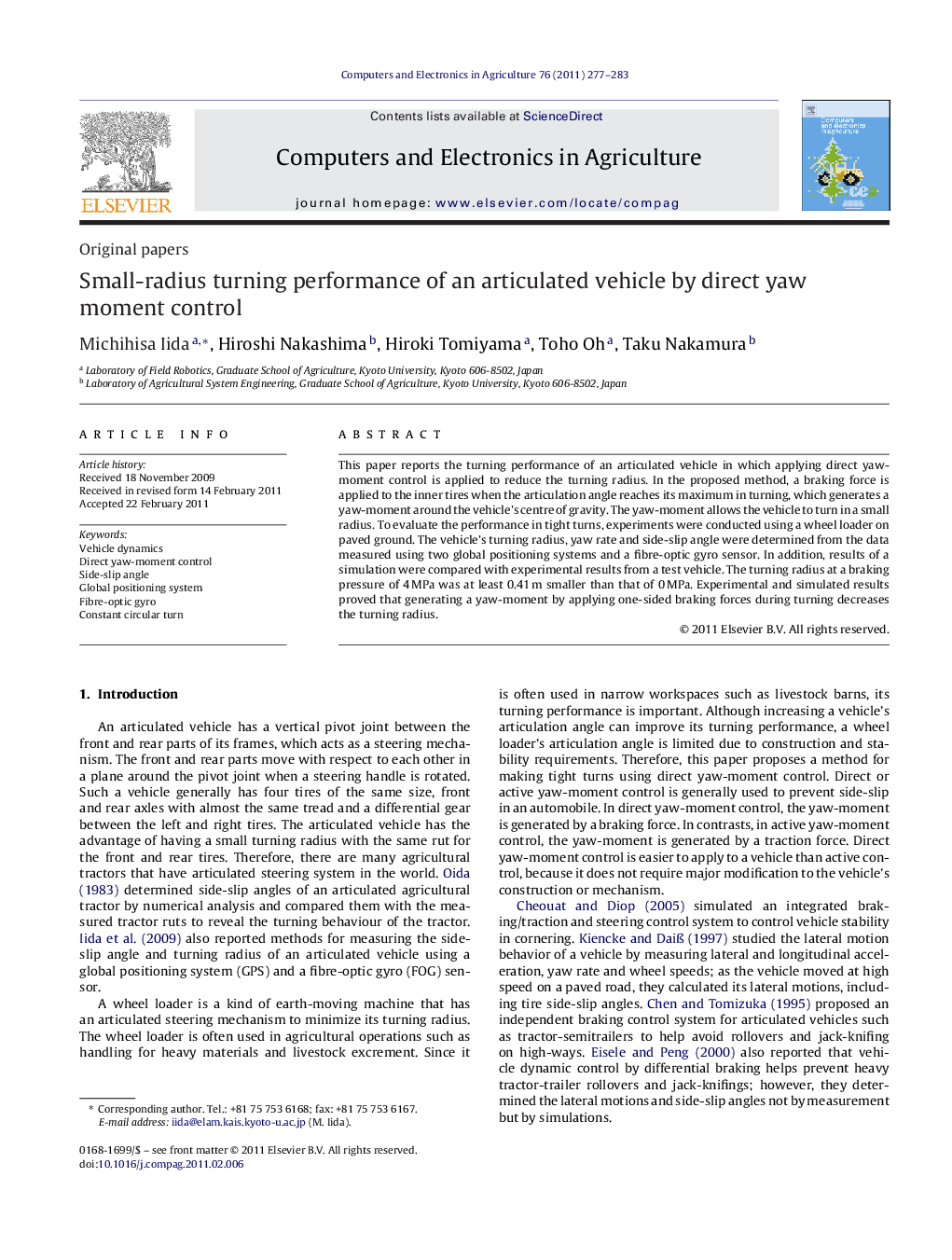| Article ID | Journal | Published Year | Pages | File Type |
|---|---|---|---|---|
| 84654 | Computers and Electronics in Agriculture | 2011 | 7 Pages |
This paper reports the turning performance of an articulated vehicle in which applying direct yaw-moment control is applied to reduce the turning radius. In the proposed method, a braking force is applied to the inner tires when the articulation angle reaches its maximum in turning, which generates a yaw-moment around the vehicle's centre of gravity. The yaw-moment allows the vehicle to turn in a small radius. To evaluate the performance in tight turns, experiments were conducted using a wheel loader on paved ground. The vehicle's turning radius, yaw rate and side-slip angle were determined from the data measured using two global positioning systems and a fibre-optic gyro sensor. In addition, results of a simulation were compared with experimental results from a test vehicle. The turning radius at a braking pressure of 4 MPa was at least 0.41 m smaller than that of 0 MPa. Experimental and simulated results proved that generating a yaw-moment by applying one-sided braking forces during turning decreases the turning radius.
► Direct yaw-moment control (DYC) is applied to articulated vehicle in order to reduce the turning radius. ► Two global positioning systems and a fibre-optic gyro sensor measure the turning radius, yaw rate and side-slip angle of the vehicle that is turning by DYC. ► Its turning radius was at least 0.41 m smaller by DYC.
